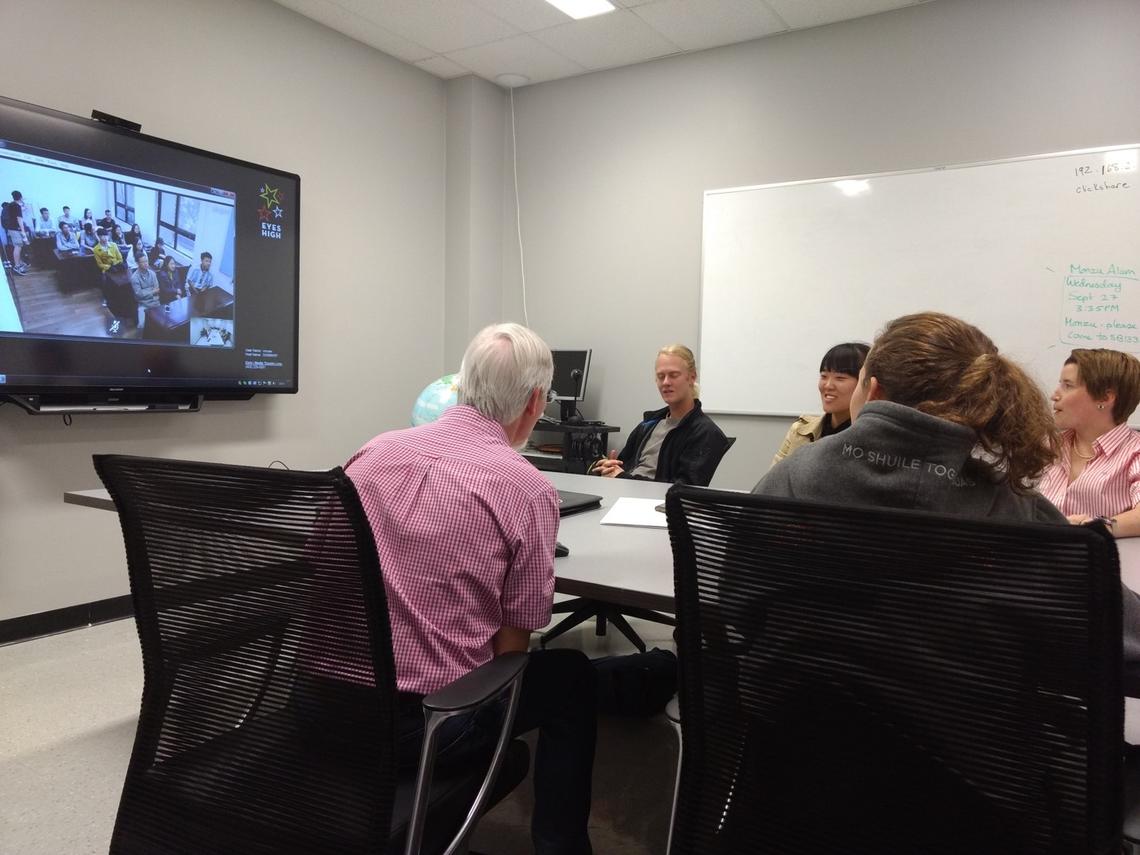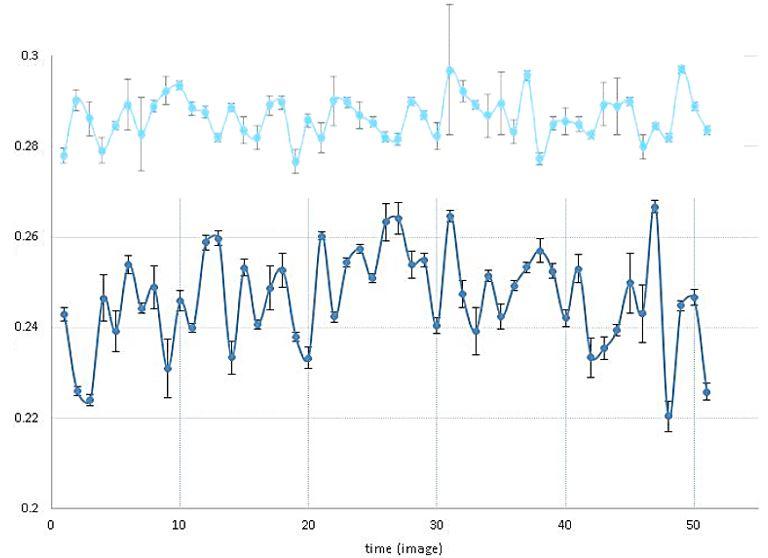Dec. 13, 2017
University classes in Canada and China pair up to take the measure of a galaxy far, far away

Langill went to Beijing to show a demonstration of the Rothney Astrophysical Observatory telescope.
Phil Langill
Separated by nearly 9,000 kilometers, two classes of astronomy students simultaneously observe a strange cosmic phenomenon one billion light years from earth.
It could be a scene from a Hollywood space movie, but it’s actually a real-life moment from an inventive and unique international collaboration led by the university’s Phil Langill, senior instructor in physics and astronomy and director of the Rothney Astrophysical Observatory (RAO).
The project started because Langill loathes an idle telescope. “I’m always looking for ways to make good use of the observatory,” he says. “And because the equipment can be operated remotely, you don’t have to be on site to use it. So I’d started to think of how we could interest people off campus — even internationally — to use the telescopes.”
By sheer coincidence, while Langill was broadening his search for potential observatory operators last summer he received a note from the dean’s office about the Internationalization at Home grant funded by Alberta Advanced Education. “The program provides international activities in science classrooms, giving students access to experiences worldwide without requiring them to travel,” says Heather Clitheroe, international co-ordinator in the Faculty of Science.
Very quickly, Clitheroe and Langill joined forces to put the successful grant application together. Langill realized an international partner wouldn’t have to be a researcher, but could instead be an astronomy instructor like him, keen to give students hands-on experience. Clitheroe mined the university’s existing relationships, and found a suitable partner in Beijing Normal University (BNU).

Wu and his students first say hello to Langill and his students via video link.
Phil Langill
Collaboration extended existing partnership
“We have been working with BNU already so we were familiar with their course content, we knew there was alignment,” Clitheroe says. “And we soon learned that Jianghua Wu at BNU and Phil shared similar research interests. From there, things moved very quickly.”
The proposal outlined how Langill’s second-year astrophysics students (ASPH 307) would, as usual, travel to the Rothney observatory and also take measurements remotely by connecting over the Internet. At the same time, Wu’s undergraduate astronomy students in Beijing would also connect via Internet to the observatory.
"Students in this class learn that an observatory is essentially a physics lab, and to trust the data, students need to understand the nuts and bolts of where the data comes from,” Langill says. "And in the more challenging projects where students examine the minutiae of things, and look for very small effects, they need to know how far they can push the equipment: can this instrument really make the detailed measurements required?"
In Beijing, Wu was equally excited about the project. Poor air quality in Beijing means he can’t use the telescope at BNU, so Wu’s students usually travel five hours to one of China’s national observatories to see a telescope in operation. “This hands-on training provides my students with a new opportunity to operate a telescope by themselves,” Wu says. “It also opens a window for the students to communicate with a foreign teacher and students.”
Of course, the two astronomy classes weren’t looking blindly in to space. They were researching a particular phenomenon: a blazar, an active galactic nucleus or giant black hole a billion light years away.

Image from a tweet from @RAOastronomy, November 7
- @RAOastronomy tweeted on Nov 7: This image (above) of blazar 3C-66A was taken by students at Beijing Normal University using the RAO's CMT, 8,800 km away! International teamwork!
'The more material they suck in, the brighter they get'
“It looks like a dot of light, like all the other thousands of stars,” Langill says. “But through detective work over the years we now know we are looking at a galaxy with a black hole at its centre. The illuminating material around it shines so brightly it produces more light than all the stars in the galaxy. The more material they suck in, the brighter they get.”
“Such blazars are bright enough for a small telescope to do very good photometry,” Wu says. “They usually show strong and rapid ariability; they are good candidates for differential photometric observations and data analysis training.”
After taking measurements, the plan is for each of the classes to reduce and analyze the blazar data separately and then to compare their findings. “The fluctuations are very small and very difficult to measure,” Langill says. “So we will likely use different strategies to see if we can tease out the little details.”

A comparison of the light output of the blazar BL Lac (dark blue) and that of an average field star.
- Above: A comparison of the light output of the blazar BL Lac (dark blue) and that of an average field star (light blue) over ~2 hours. Although instrumental variations remain in the data, the luminosity measurably changed, indicating a dynamic environment around the black hole. The data analysis was done by students Traian Craiciu, Kate Oberg, Lareeb Umer, and Patrick Harrison.
Real-world science doesn’t come with an answer key
Langill says one of the greatest benefits of this work is the opportunity for students to experience real hands-on science.
“Students get used to doing experiments where the results are already known,” Langill says. “In this course we collect the data, we see what the universe is doing, and we don’t know what the results will be. It turns everything around in the head of the student. Welcome to the real world of science!”
And like the real world of science, there were challenges with this international collaboration — likely the first at the University of Calgary to connect two undergraduate classes. There was a language barrier, a significant time change to co-ordinate around, and the complicating factor that telescopes are useful only at night, and only with clear skies.
“This pairing of two international classrooms gives students exposure to the same kinds of professional and academic challenges they’ll face after graduation,” Clitheroe says. “They have to think about their place in the global scientific community, what it means to work on a global collaboration, and it might prompt them to consider an international experience.”
Langill says: “There were some snafus, some challenges and surprises, but I think the collaboration has been a success and we have certainly all learned a lot from the experience.”
